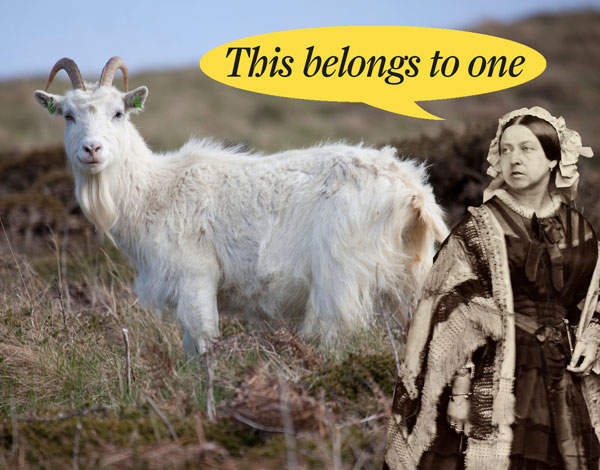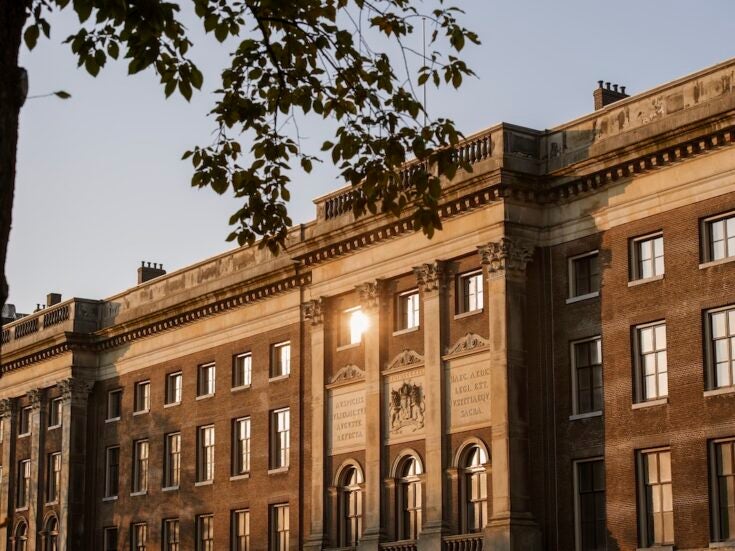

If you are a reader of Spear’s, then of course you spend the winter cocooned in cashmere. Cashmere is our compensation for the onset of winter, the arrival of the cold and damp: cashmere knitwear, cashmere blankets, cashmere sports jackets, cashmere dressing gowns, cashmere scarves, cashmere hot water bottle covers… In short, we have come to take it for granted, and I think it is time that we recalibrated our view of the stuff. While I do not have the energy to mount a campaign, I am doing my best to look at cashmere with Victorian eyes.
Take, for instance, the opening of Charles White’s 1840 novel The Cashmere Shawl, a whimsical piece of fiction narrated by the eponymous garment of the title. ‘It was upon the southern slope of one of the saffron tinged eminences, at the foot of the stupendous mountains, which separate the kingdom of Caubul from Thibet and Turkistan, that the rich material of which my costly form was woven, first saw the light.’
While the oeuvre of White has not perhaps aged quite as well as those of his contemporaries Balzac and Dickens, his choice of subject and ornamental language place us firmly in the middle of the cashmere craze that gripped Europe during the 19th century. For a contemporary, the word ‘cashmere’ was enough to summon up a tantalisingly exotic picture of shimmering mystery and romance.
And at the centre of it all was a fleece of fabled softness and unparalleled value. Her Britannic Majesty Queen Victoria even received an annual tribute of cashmere from the Maharajah Gulab Singh, to whom they had made over Kashmir; it was the sartorial bling of the ruling class of the 19th century. Not since Jason and his Argonauts had quested after the Fleece had an animal’s coat so completely captured the human imagination.
What a contrast to today. I am afraid there is no denying that we have become blasé, despite the difficulty of obtaining the finest examples of the fabric. Yields per animal are minimal — 250 grams per year — and once the coarser fibres are removed it is closer to 100 grams.
Think about this next time you are buttoning that cashmere cardigan, pulling that cashmere V-neck over your head or shrugging on that soft cashmere sports jacket and I guarantee it will improve your experience. Pause to run your fingertips over the fabric: there is something about handling proper cashmere that — I am sure — triggers the release of one of those helpfully invigorating, mood-lifting chemicals ending with ‘ine’ into the brain.
And if the feel of the stuff is not enough, then a sure-fire cure for the onset of autumn is a quick trip to Zegna on Bond Street, where the premium cashmere assortment of sweaters is neatly arranged in a dazzling prismatic spray of colours. Whenever I see this joyous display of colour, I am tempted to do a Jay Gatsby and it is only the presence of the rather dignified man at the door that has stopped me yanking them all off the shelves and throwing them around the shop.
Of course, the late Sergio Loro Piana was a dab hand at cashmere. Together he and his brother Pier Luigi literally lived the cashmere life, assessing and anticipating all the requirements of civilised living and then coming up with cashmere products and indeed new types of cashmere to meet needs that few of us knew we had.
For instance, after a decade of consultation with the growers their firm announced that it had developed a truly scarce and special fibre: baby cashmere. Combed from a baby goat just once in its life, this is the softest of the soft, a true virgin fibre. It wrote a new chapter in a centuries-old story.
However, my favourite Loro Piana fabric is called Coarse Hair. Sergio once gave me a length for my birthday and I had my tailor Terry Haste make me a sports jacket. It takes a lot to impress Terry, but on this occasion he was struggling for superlatives.
The clue, of course, was in the name; it had that hirsute quality that both Terry and I prize in old cloth and which is so difficult to find with new fabrics that are milled to the sort of high-luxury smoothness that puts one in mind of billiard tables. But here was a cashmere with robust character and something more important than that, a genuine pushing of the boundaries of luxury.
Mankind may not have been crying out for a cashmere that behaved like a tweed or a Shetland, but then the essence of the task of the true purveyor of luxury is to create something that you did not know you wanted but have to have it when you see it.






